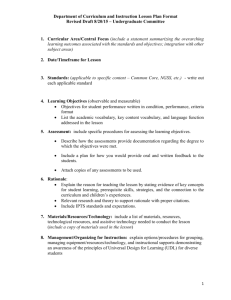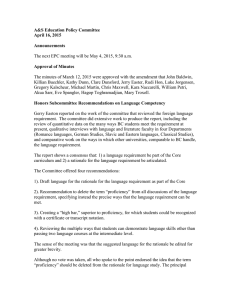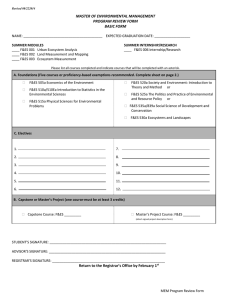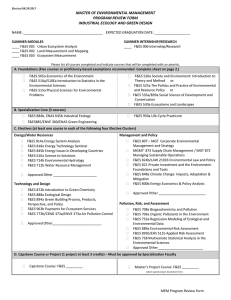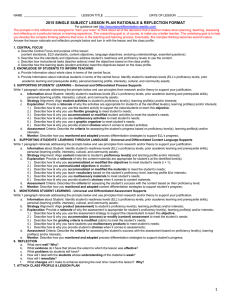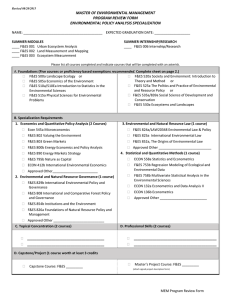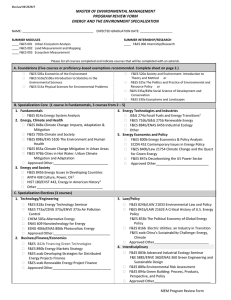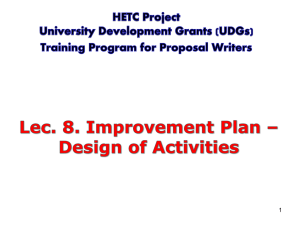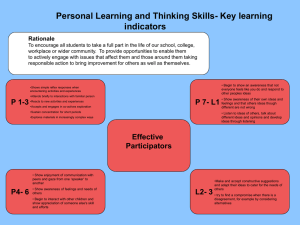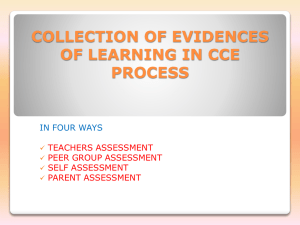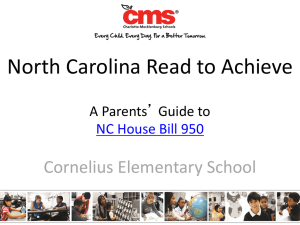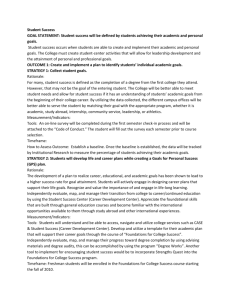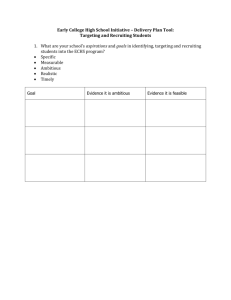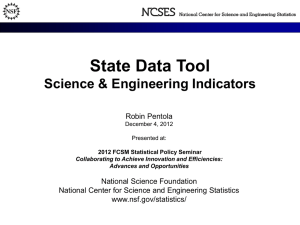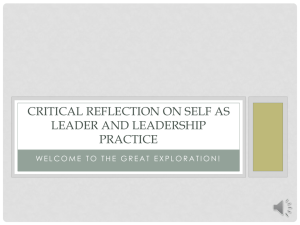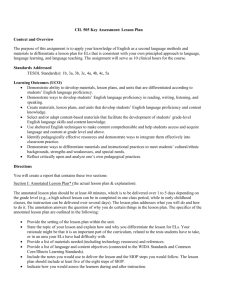Document
advertisement
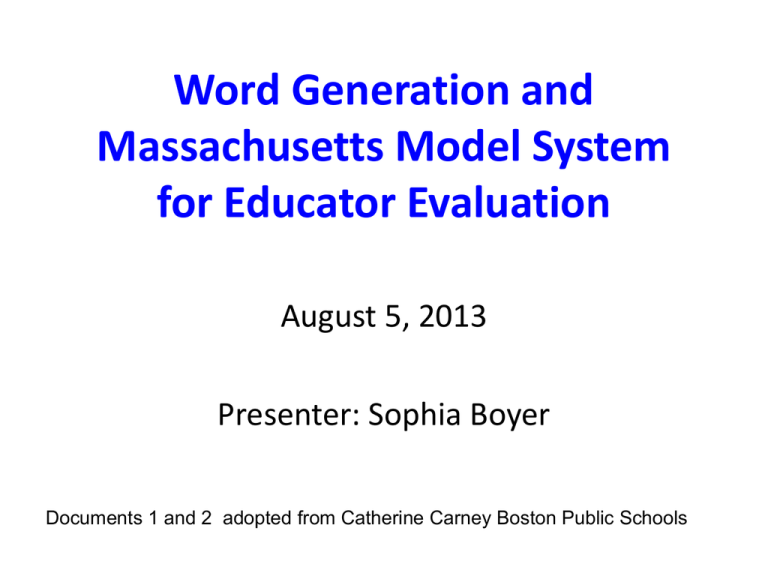
Word Generation and Massachusetts Model System for Educator Evaluation August 5, 2013 Presenter: Sophia Boyer Documents 1 and 2 adopted from Catherine Carney Boston Public Schools Agenda: • Assessing prior knowledge of Teacher Evaluation • Standards and Indicators for Effective Practice • Word Generation models that support evaluation criteria • Group practice • Wrap-Up – Questions/Answers Why We Are Doing What We Are Doing? Changing Conditions The work of schools has never been more complex and demanding and the challenges teachers face to improve student achievement have never been greater. Greater Expectations As a result expectations from the District have moved a key function of teacher performance to teacher self-reporting. This change hopes to improve teaching and learning and to significantly improve student achievement. Capturing Rigorous and Relevant Instruction in our Evaluation Student Learning Expected Student Performance Instruction Actual Student Performance Assessment Rigor/Relevance Rigor/Relevance Student Learning Feedback Reflection What are the Standards and Indicators for Effective Teaching Practice? Hint: There are 4; they highlight the focus of the work. Turn and Talk What are the Standards and Indicators for Effective Teaching Practice? I. Curriculum, Planning & Assessment II. Teaching All Students III. Family & Community Engagement IV. Professional Culture I. Curriculum, Planning &Assessment o I-A. Curriculum and Planning o I-B. Assessment o I-C. Analysis • What does this look like in your work? How can teachers promote student learning through quality instruction? Standards Defined (Bold bullets are outcomes that Word Generation curriculum and/or coaching best supports) Standard 1: Curriculum, Planning, and Assessment as a teacher’s ability to: • Promote student learning through quality instruction • Design and administer meaningful assessments • Give valuable feedback to students on their learning progress • Use student performance data to improve his or her instruction and assessment capabilities II. Teaching All Students o II-A. Instruction o II-B. Learning Environment o II-C. Cultural Proficiency • What does this look like in your work? Standards Defined (Bold bullets are outcomes that Word Generation curriculum and/or coaching best supports) Standard 2: Teaching All Students defines a teacher’s ability to: • Promote learning in growth for all students through instruction that holds students to high standards • Create a safe classroom space for all students • Ability to demonstrate cultural sensitivity III. Family & Community Engagement o III-A. Engagement o III-B. Collaboration o III-C. Communication • What does this look like in your work? IV. Professional Culture o IV-A. Reflection o IV-B. Professional Growth o IV-C. Collaboration o IV-D. Decision-making o IV-E. Shared Responsibility o IV-F. Professional Responsibilities • What does this look like in your work? Standards Defined (Bold bullets are outcomes that Word Generation curriculum and/or coaching best supports) Standard 4*: Professional Culture as how teachers use culturally proficient, skilled, collaborative, and ethical practices to promote learning for all students. • Reflection of practice • Professional growth of practice • Collaboration that improves practice *Standard 4 differs from the other standards of effective teaching because it focuses on teacher growth and learning opportunities as opposed to practices that directly impact students. What is Evidence of Practice Focus on students and student performance - Word Generation activities - Word Generation standards - Word Generation teacher developed scaffold supports The Rationale: Why You Do What You Do Do I/Have I: Connect class work to performance standards Teach all Students? Work collaboratively with other teachers? Developed lessons that reflect high expectations for student achievement? Included an assessment component in my lesson plans? Use performance data to improve instruction? The criteria most important in the teacher evaluation process is aligning objectives, practices, and assessments, to proficiency of standards. These indicators identify, with clarity, the intentionality of your instructional practices. Rationale for Element I-A-2 If I were submitting a Word Generation 5.10 lesson plan that I thought connected to element I-A-2 (Child and Adolescent Development) my rationale might read… • (First) Evidence of proficiency of element I-A-2 can be found in the Newscaster/Reader’s Theatre Day 1 activity of the Word Generation lesson plan. • (Second) The Word Generation lesson plan includes a variety of activities for effective engagement of a range of collaborative discussion CCSS.ELA-Literacy.SL.5.1. Students are viewing, listening, reading, writing, speaking, discussing and listening. These activities address the developmental level of my students and, while providing a variety of ways to reach the same end, introduction to a controversial academic topic and exposure to targeted words. Ticket Out the Door Using your responses to the Standards draft an evaluation rationale that demonstrates your ability to connect evidence to the proficiency standards of the teacher rubric. Next Steps 1. Walk through the self-assessment and create a draft for yourself. 2. If practical, work with a small group with the model or models suggested today or one customized for your school’s needs. 3. Present the information you received today to those in your district who will be involved in preparing their own evaluation.
